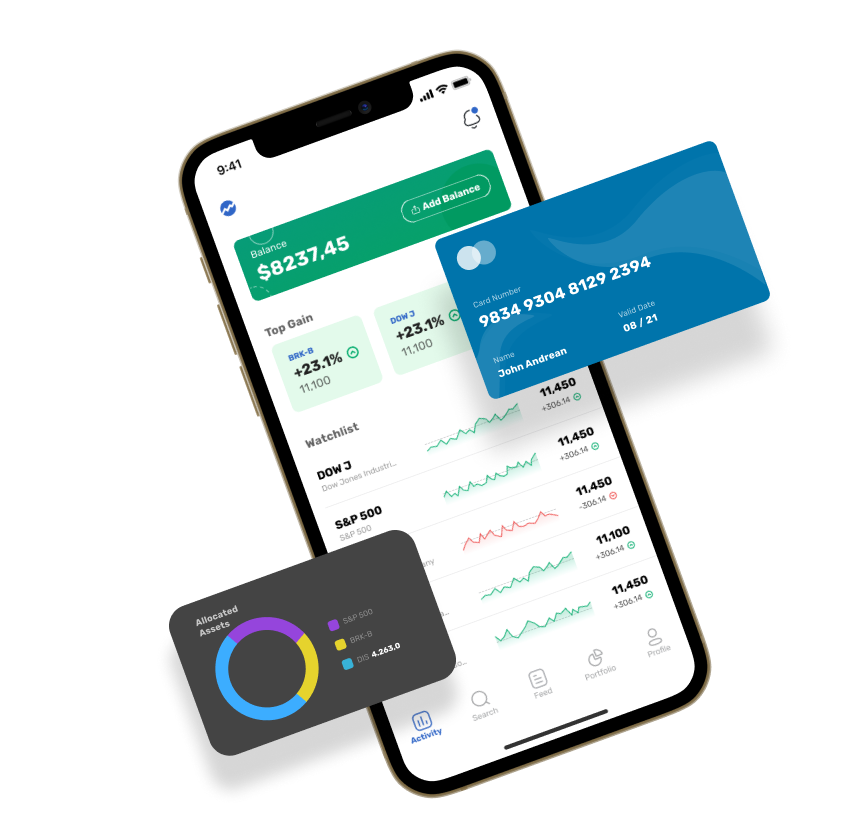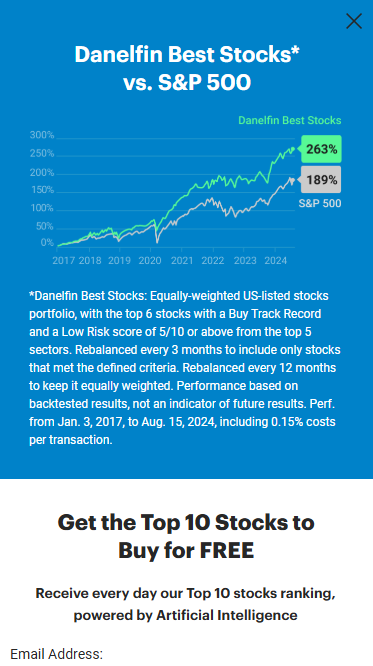20 Excellent Facts For Selecting AI Stock Investing Analysis Websites
20 Excellent Facts For Selecting AI Stock Investing Analysis Websites
Blog Article
Top 10 Ways To Evaluate The Security And Privacy Of Ai Stock Trading Platforms
As they handle sensitive and personal financial information, security and privacy are of paramount importance when using AI trading platforms which predict or analyze the prices of stocks. Data breaches or misuse of data can result in financial losses and reputational harm. Here are 10 best guidelines to determine the security and privacy of these websites.
1. Examine the Data Encryption
Secure transmission of data Verify that the platform is using secured protocols (e.g. TLS/SSL) that encrypt the data that is transferred between your device and their servers.
Encryption at rest: Verify that the sensitive information stored on the platform's servers is secured with strong encryption standards (e.g. AES-256, for example.).
End-to-end encryption: Check whether your platform offers encryption from beginning to finish for sensitive data and communications. are highly sensitive.
2. Examine Authentication Mechanisms
Two-factor authenticaiton (copyright) Check that the platform supports this to add additional security.
Find out about biometric authentication options available for mobile apps (e.g. facial recognition, fingerprint).
Password policy: Check to find out if your provider has strict rules regarding passwords.
3. Verify Compliance
Financial Regulations: Check that the platform adheres to the relevant financial regulations.
Data protection laws: Verify the compliance of your data privacy laws (e.g. GDPR, GDPR, CCPA) if you are or trade with regions covered by these laws.
Audit certifications. Verify that the platform you're considering has passed an independent assessment of security or has been certified.
Review Controls for Accessing Data
Role-based access: Ensure that the platform supports roles-based controls (RBAC) that restricts data access only to authorized users.
Check if you have the ability to establish different levels of access for teams or users.
Monitoring activity: Ensure that the platform records and monitors every user's activity for any suspicious behavior.
5. Examine Vulnerability Management
Regular updates: Ensure the platform regularly updates its software to patch security holes.
Check that your platform is regularly screened for penetration testing in order to identify security vulnerabilities and then fix them.
Bug bounty programs: Verify whether there is a bug bounty program on the platform to encourage security researchers from the outside to report weaknesses.
6. Evaluate Data Privacy Policies
Transparency: Read the privacy guidelines on the website to find out how your data will be used, collected and shared.
Data minimization - Ensure that the platform only collects the information it requires to function.
Third-party sharing: Find out whether your platform shares data with third parties, and if it does then what are the conditions.
7. Secure API usage must be inspected
API security. Ensure APIs use secure authentication techniques (e.g. OAuth keys, API keys), and that data is encrypted.
Rate limiting - Verify that the API has limits on rate to stop abuses or brute force attacks.
Verify the logs of access. Make sure that the platform monitors API usage, and logs it to track usage.
8. Assess Incident Reaction and Recovery
Incident response plan: Ensure your platform is equipped with an incident response plan for handling security breaches or data breaches.
Notification policies: Verify whether the platform informs users immediately in the case of a security breach.
Review the backups of your data and Disaster recovery plans.
9. Review Physical Security Measures
Security of the data center - Make sure that the server for the platform is located in secure data centres that have physical security (e.g. surveillance, access control).
Redundancy: Check if the platform has redundant systems to ensure that data is available in the event of hardware failure.
Geographic distribution: To increase resilience, make sure that the data is distributed over multiple places.
10. Test User Privacy Controls
Data deletion: Make sure the platform allows you to permanently delete your data when you stop using the services.
Privacy settings: Ensure that the platform has privacy settings to allow you to control which information is shared or visible.
Check to see if anonymization is performed on data that is used in machine learning or analytics.
Bonus Tips
Feedback from users and reputation Read user reviews and feedback to determine the credibility of the platform's security and privacy.
Trial period: You can make use of a demo or a no-cost trial to try the platform's privacy and security controls.
Support for customers: Make sure the platform provides a solid support in the event of security-related concerns or issues.
Follow these tips to evaluate the security and privacy level of AI platforms for stock prediction and analysis. This way your personal information and financial details are safe. A safe platform not only secures your assets, but also creates confidence in their services. Follow the top rated next page about ai stock picker for blog info including ai stock, best ai trading software, ai for investing, ai for investing, best ai trading software, ai investing platform, ai stock picker, chatgpt copyright, ai for stock trading, ai investment platform and more.
Top 10 Ways To Evaluate The Scalability And Accuracy Of Ai-Based Stock Trading Platforms
It is important to assess the performance and scalability of AI-driven trading and stock forecasting platforms. This will help ensure that they can manage the growing volume of data as well as market complexity and demands from users. Here are 10 top tips for evaluating the scaleability.
1. Evaluate Data Handling Capacity
TIP: Make sure that the platform you're looking at can handle and analyze large datasets.
The reason: Scalable platforms must be able to be able to handle growing volumes of data without performance degradation.
2. Test the capabilities of a Real-Time Processor
TIP: Examine how the platform processes real-time data streams, like live stock prices, or breaking news.
The reason: Inconsistent trading decisions can result in missed opportunities.
3. Cloud Infrastructure Elasticity and Check
Tips. Check if the platform is using cloud-based infrastructure, such as AWS, Google Cloud and Azure which are able to expand resources according to demand.
Cloud platforms provide flexibility, allowing systems to increase or decrease its size based on demand.
4. Algorithm Efficiency
Tip: Check the computational efficiency and the accuracy of AI models to make predictions.
Reason: Complex algorithms can consume a lot of resources, so the ability to optimize these algorithms is vital to scalability.
5. Study Parallel and Distributed Computing
Check whether the platform utilizes parallel computing or distributed computing frameworks.
Why: These new technologies offer faster data analysis and processing across multiple nodes.
Review API Integration and Interoperability
TIP: Examine the integration of the platform with external APIs.
The reason: Seamless Integration guarantees that the platform is able to adapt easily to new data sources, trading environment as well as other aspects.
7. Analyze User Load Handling
Tip: Simulate high user traffic to see how the platform does under high load.
Why should scalable platforms deliver the same quality of service regardless of the number of users.
8. Assessment of Model Retraining and Adaptability
Tips - Check how frequently the AI model is retrained, and with what efficiency.
Why: Because markets always change, it is important to update models regularly.
9. Examine for fault tolerance and redundancy.
TIP: Make sure the platform has failover mechanisms and redundant systems in the event of software or hardware malfunctions.
The reason trading can be costly, so fault tolerance and scalability are vital.
10. Monitor Cost Efficiency
Tips: Examine the costs of scaling the platform, which includes cloud resources, data storage and computing power.
Why? Scalability should come at a price that is sustainable. This means balancing the performance against the cost.
Bonus Tip: Future-proofing
Check that the platform is able to incorporate the latest technology (e.g. quantum computing or advanced NLP) and is able to adapt to regulatory changes.
These elements will help you evaluate the scaleability of AI-powered stock prediction and trading platforms. They will also ensure that they are robust efficient, reliable, ready for expansion, and are future-proof. Follow the top rated chart ai trading advice for blog info including best stock prediction website, ai in stock market, can ai predict stock market, investing with ai, ai tools for trading, stocks ai, ai options trading, best ai stocks, stocks ai, ai options trading and more.